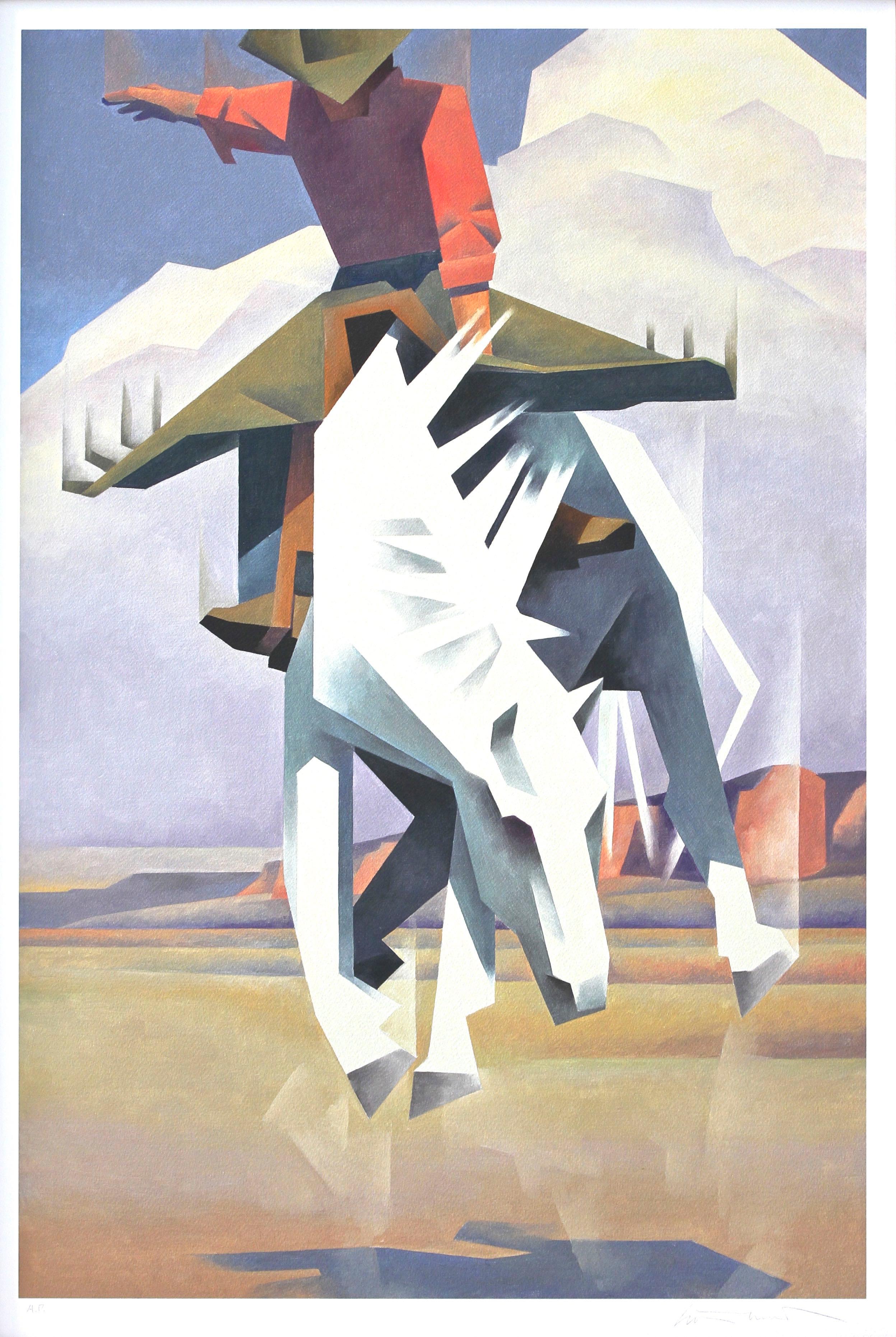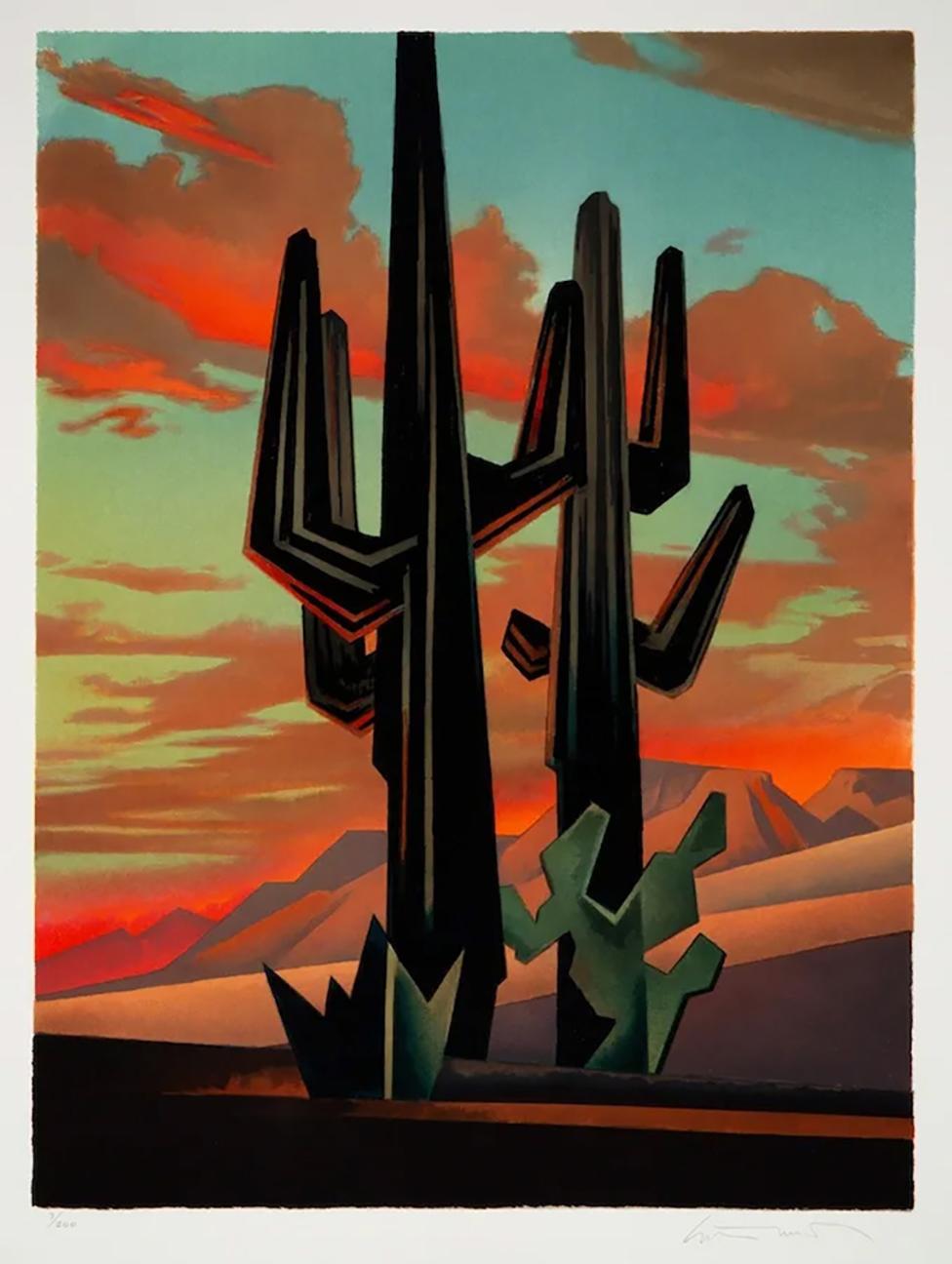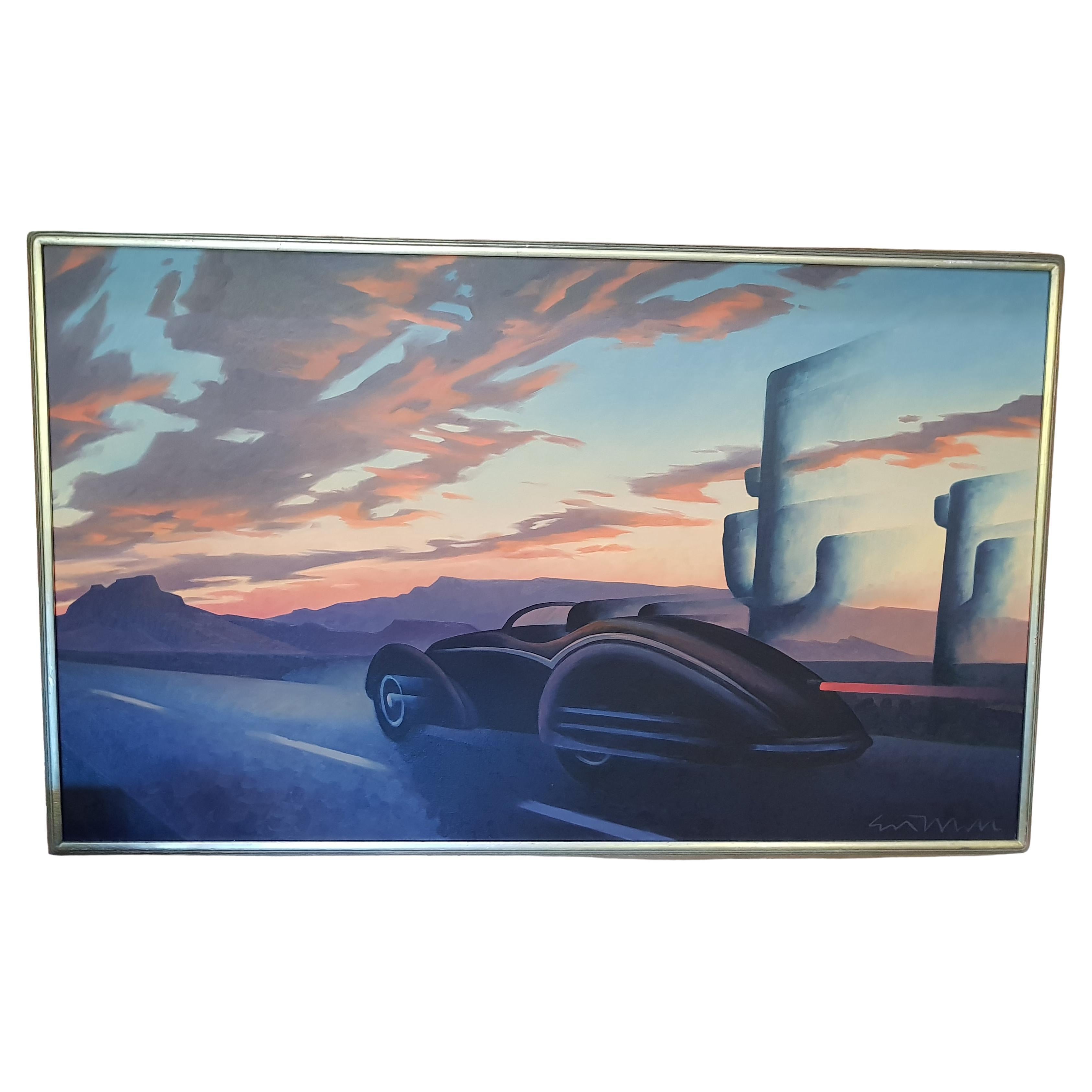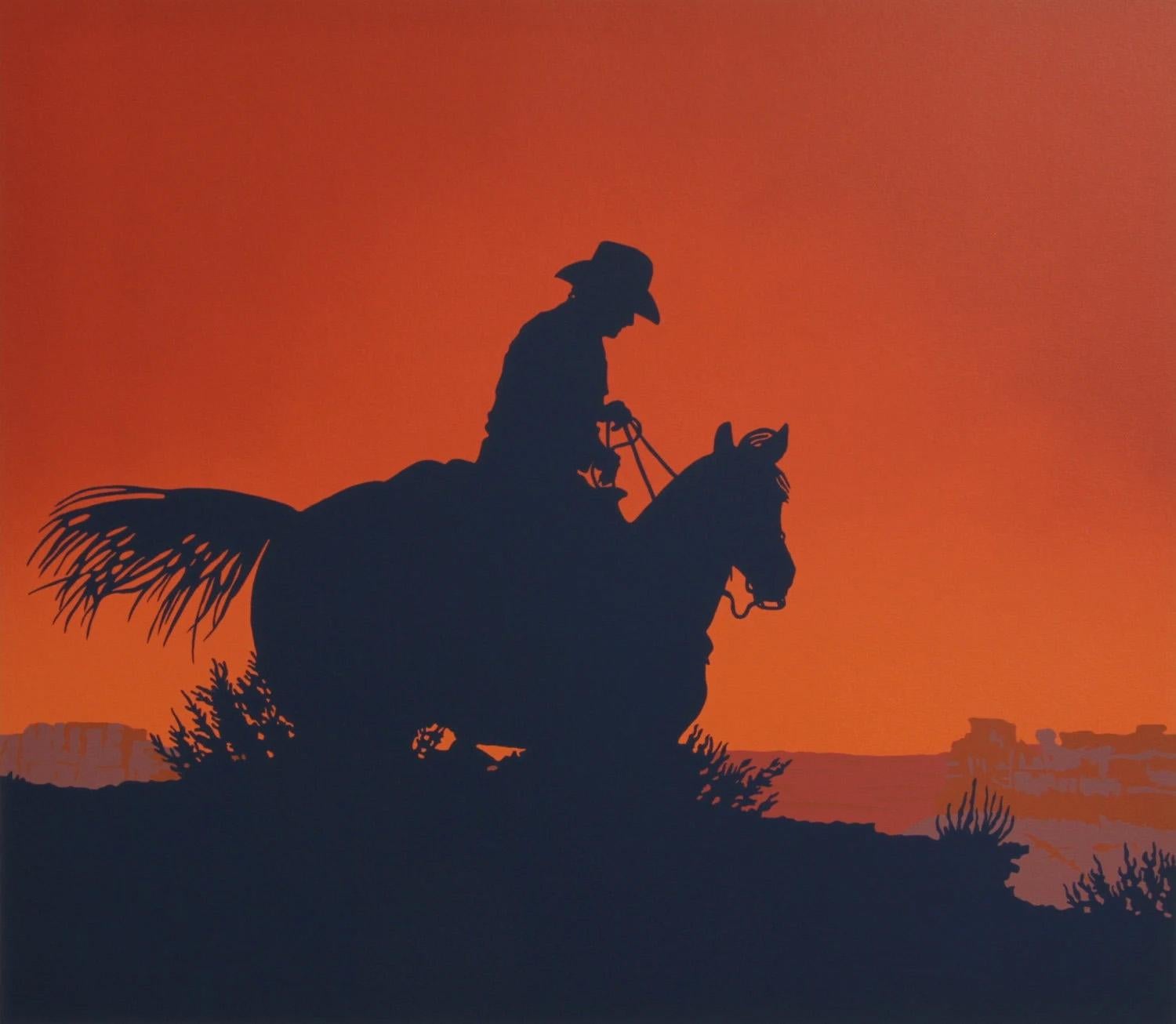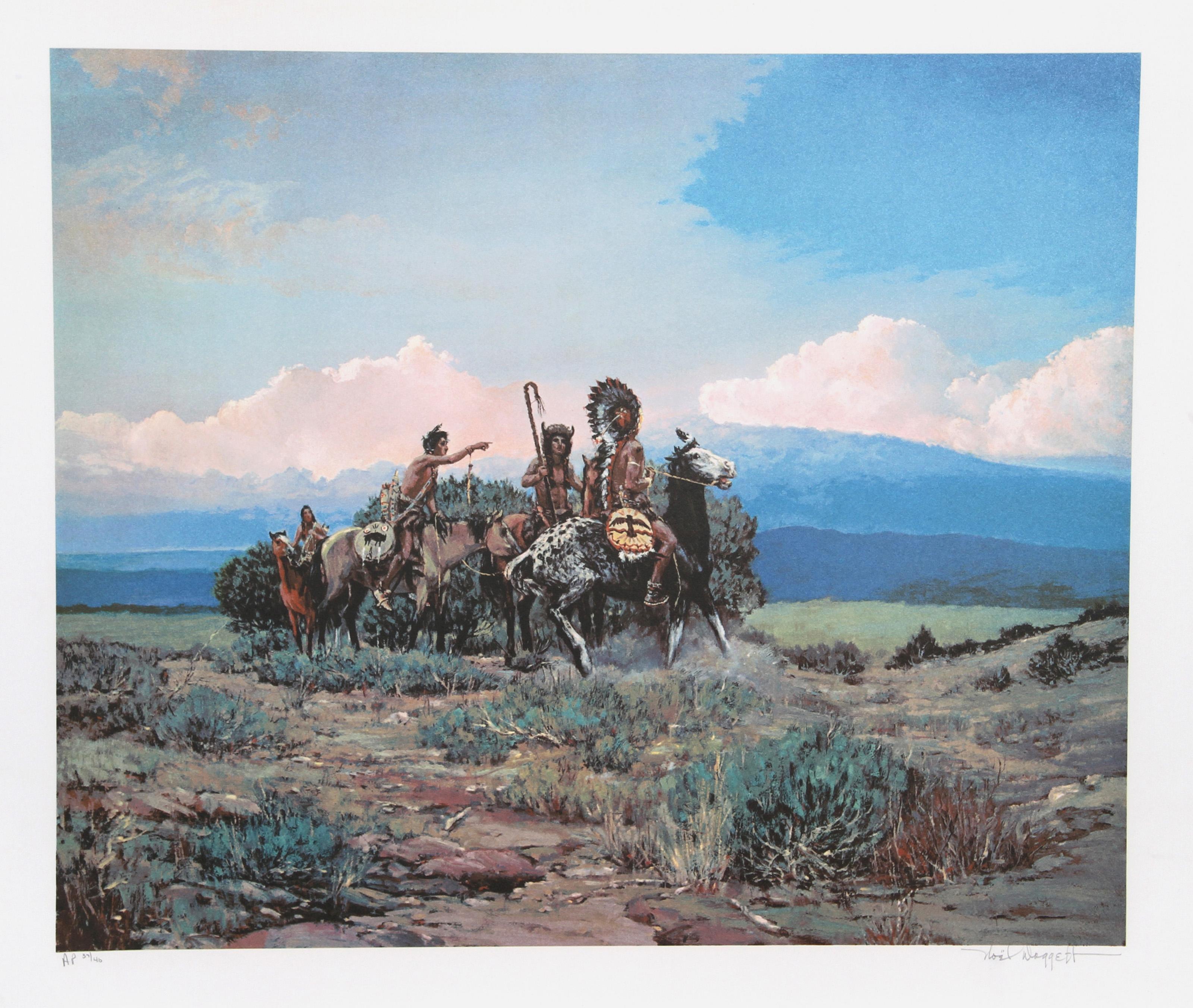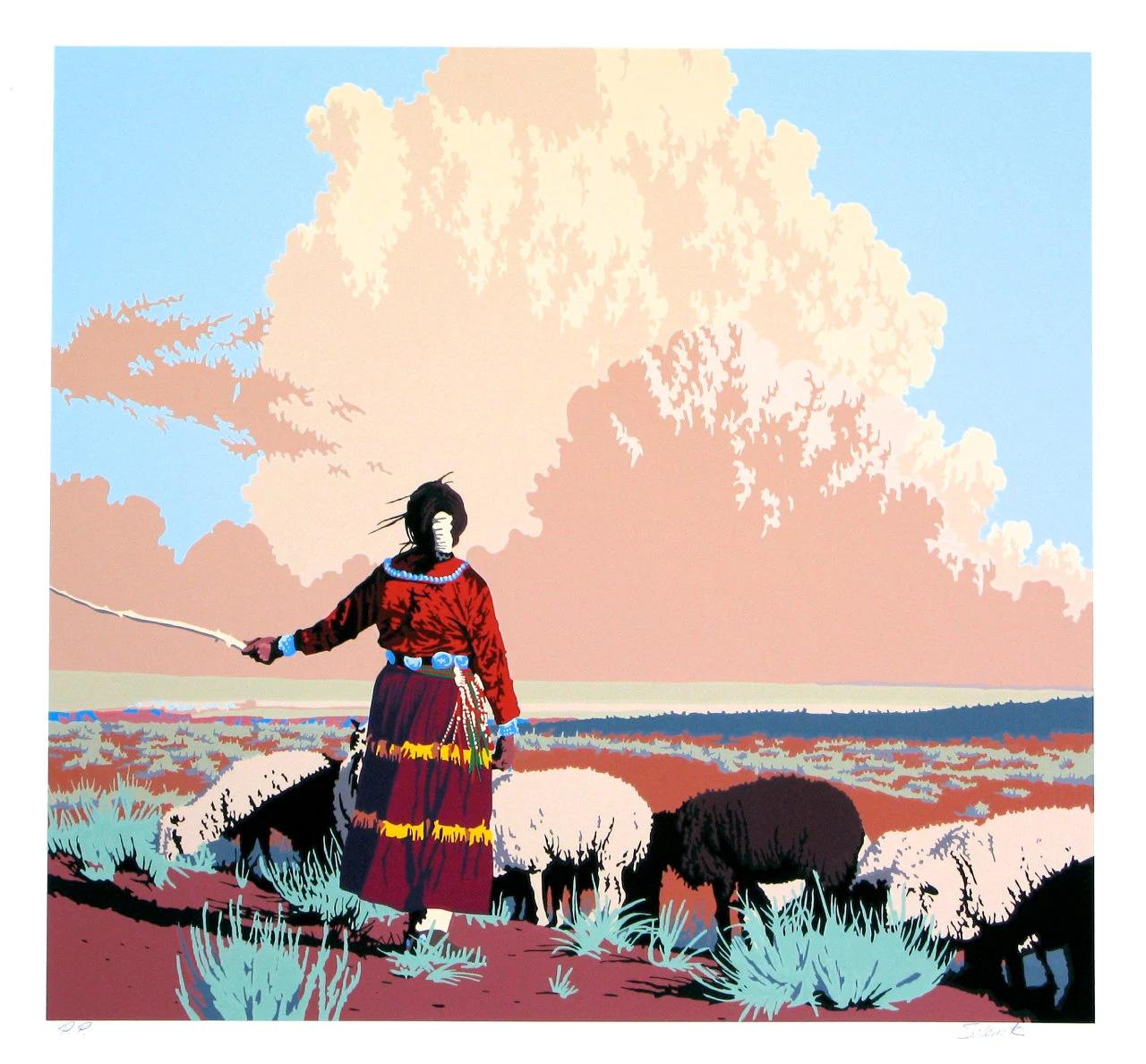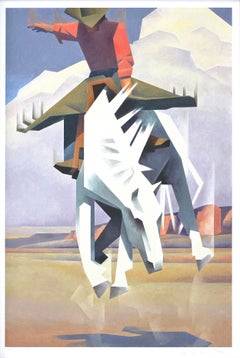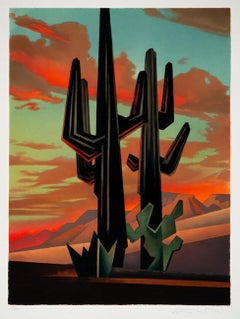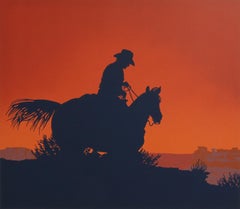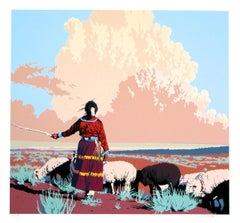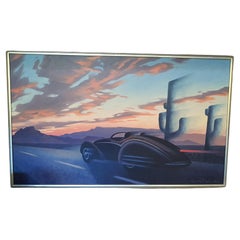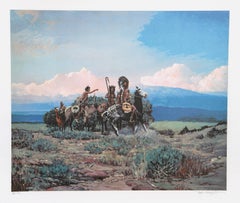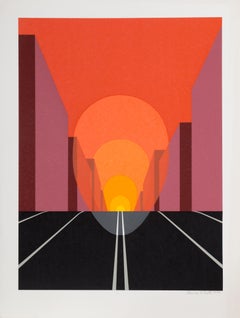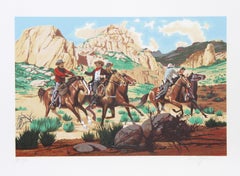Items Similar to Full Speed Ahead by Ed Mell
Want more images or videos?
Request additional images or videos from the seller
1 of 5
Ed MellFull Speed Ahead by Ed Mell
$7,300
£5,646.25
€6,427.93
CA$10,481.62
A$11,451.49
CHF 6,001.77
MX$136,734.49
NOK 75,952.94
SEK 70,824.54
DKK 48,006.37
About the Item
Full Speed Ahead 1985
Ed Mell 1942-2024
Original signature lower right
Stone Lithograph
22 x 30 inches
MINT CONDITION. NEVER FRAMED!
SHIPPING CHARGES INCLUDE SHIPPING, PACKAGING & INSURANCE
Biography 1942-2024
Born in Phoenix, Arizona in 1942, Ed Mell started drawing as soon as he could hold a pencil. Influenced by his older brother Frank’s drawings of World War II combat aircraft and soldiers, Mell found his own hobby designing model automobiles. His interest in automobiles continued into high school, where Mell could usually be found drawing one of his friend’s cars or watching car commercials for future drawing ideas.Graduating from Phoenix Junior College with an Associated Arts Degree, he enrolled in The Art Center College of Design in Los Angeles to pursue his interest in illustration. During his four years of study there Mell broadened his artistic technique and learned to express his artistic conviction. In November, 1967, he accepted a position as a junior art director at Kenyon and Eckhardt, a major New York advertising firm. However, in only 10 months Mell found that the advertising world smothered his creativity. Considering a move back to Los Angeles, he called an old friend, Skip Andrews, who assured him that work there was scarce, and that he himself was planning to move to New York. A few months later Mell and Andrews established their own illustration firm, which they named Sagebrush Studios. Sagebrush Studios became an immediate success, with major corporate clients such as Cheerios and RCA, and illustrations appearing in Esquire and Psychology Today. But success had its price, and within three years the Arizona native was struggling with the fast-paced New York lifestyle and pressures of the advertising business. Mell jumped at the opportunity to teach summer classes in silk screening and drawing on the Hopi Reservation at Hotevilla, Arizona. When the summer session was complete, he took a hard look at his future and decided to get back to his Arizona roots. A few months later he and Andrews closed Sagebrush Studios. Returning to Phoenix, Mell and his younger brother decided to open their own illustration business. But the Phoenix market for illustration was in less demand than Mell was used to, so during breaks he began sketching landscapes using colored pencils. Colored pencils slowly turned into paints and by 1978 he had made the transition from commercial artist to landscape painter.
Throughout the years, Mell has constantly changed the subjects he depicts and the techniquess to capture them. Beginning specifically with southwest landscapes, he has moved to other southwestern subjets including cowboys, horses, longhorn cattle and cactuses. Although best known for his oil paintings, he also developed an avid body of collectors for his bronze sculptures. Collectors are often left with a unique visual impression when they witness first-hand the tangling of reality with imagination. Ed Mell has won numerous awards and honors. His art has been exhibited in nine museum shows, including the Eiteljorg Museum of American Indian and Western Art, Scottsdale Center for the Arts, Mesa Southwest Museum, and the Rockwell-Corning Museum of Modern Art. More than 40 corporate and private collections have acquired his paintings and sculptures, and his life as an artist has been chronicled in major art publications. His biography, "Beyond the Visible Terrain: The Art of Ed Mell," was published in l996. His art also has been featured prominently in "Leading the West: 100 Contemporary Painters & Sculptors" and "Place of Spirit: Canyon de Chelly, 100 Years of Painting and Photography.
Corporate Collections
Atlantic-Richfield Corporation, Los Angeles, California
Bank One, Phoenix, Arizona
Loew's Ventana Canyon Resort, Tucson, Arizona
Mountain Bell, Denver, Colorado
Tri-Star Pictures, Hollywood, California
U-Haul Corporation, Phoenix, Arizona
Public Collections
City of Glendale, Glendale, Arizona
City of Scottsdale, Scottsdale, Arizona
Phoenix Art Museum, Phoenix, Arizona
Scottsdale Museum of Contemporary Art, Scottsdale, Arizona
Kartchner Caverns, Southern Arizona
Private Collections
Forbes Collection
Mr. & Mrs. Bruce Babbitt, Washington, DC
Craig & Barbara Barrett, Phoenix, Arizona
Mr. & Mrs. Joseph Coors, Golden, Arizona
Stephane Janssen, Scottsdale, Arizona
Arnold Schwarzenegger, Los Angeles, California
Diane Keaton, Beverly Hills, California
Collier Gallery, Tempe Arizona
Mayo Clinic
Denver Art Museum
- Creator:Ed Mell (1942, American)
- Dimensions:Height: 22 in (55.88 cm)Width: 30 in (76.2 cm)
- Medium:
- Period:
- Condition:
- Gallery Location:Phoenix, AZ
- Reference Number:1stDibs: LU2623215166292
About the Seller
No Reviews Yet
Vetted Professional Seller
Every seller passes strict standards for authenticity and reliability
1stDibs seller since 2023
8 sales on 1stDibs
- ShippingRetrieving quote...Shipping from: Phoenix, AZ
- Return Policy
More From This Seller
View AllEd Mell, This Palomino Ain't No Pal of Mine, Giant Size, 54 x 36 in , Special Ed
By Ed Mell
Located in Phoenix, AZ
This Palomino Ain’t No Pal of Mine 1982
Giant Size, Special Limited Edition
Archival Pigment Print
Original Pencil Signature, Signed Lower Right
Made in collaboration with Ed Mell
...
Category
1980s Contemporary Figurative Prints
Materials
Digital
Sonoran Kings by Ed Mell
By Ed Mell
Located in Phoenix, AZ
"Sonoran Kings"
Ed Mell 1942-2024
Stone lithograph
32" x 24"
**PRINTS ARE ESTATE SIGNED WITH WITH EMBOSSED LOGO AND SIGNATURE STAMP***
Edition. 200, 2020
Print is unframed.
Biograp...
Category
21st Century and Contemporary Landscape Prints
Materials
Lithograph
Down to the Valley by Bill Schenck
By Bill Schenck
Located in Phoenix, AZ
Down in the Valley
Bill Schenck
Serigraph 46/50
Edition of 50
Image size: 25 x 29 inches
Paper size: 31 x 35 inches
SHIPPING CHARGES INCLUDE SHIPPING, PACKAGING & INSURANCE
UNFRAM...
Category
1990s Contemporary Figurative Prints
Materials
Screen
Bill Schenck, Last Horizon, Serigraph
By Bill Schenck
Located in Phoenix, AZ
SHIPPING CHARGES INCLUDE SHIPPING, PACKAGING & **INSURANCE**
Last Horizon, 1991
Bill Schenck
Serigraph, Printers Proof
Size: 27.75 x 29.75 inches
UNFRAMED
SHIPPING CHARGES INCLUDE...
Category
1990s Contemporary Landscape Prints
Materials
Screen
Red Rider by Bill Schenck
By Bill Schenck
Located in Phoenix, AZ
SHIPPING CHARGES INCLUDE SHIPPING, PACKAGING & **INSURANCE**
Red Rodeo Rider 1981
Bill Schenck
Serigraph, edition of 75
Image size 35 x 25 inches
UNFRAMED
Billy Schenck has been...
Category
1980s Figurative Prints
Materials
Screen
Wide Open by Greg Singley
Located in Phoenix, AZ
Title: Wide Open
Artist: Greg Singley
Archival Pigment Print
100% Cotton Rag 300gm
Image size: 20 x 32.625
Paper size: 24 x 36 inches
Greg Singley
Greg Singley – was born in 1950 in Greensboro, Alabama. He received his Associates Degree at Walker Collage Jasper Alabama and furthered his college education at the University of South Alabama, Mobile Alabama. He attended the revered Ringling School of Art for his art training in Sarasota Florida and graduated with honors with a certificate in commercial illustration.
In 1978 Singley moved to Phoenix Arizona to pursue his passion for western art and illustration. He worked for several years as an art director for Phoenix Public News and as a freelance illustrator and at the same time experienced sales of Native American and Western Landscape in several Arizona galleries which include Ratliff Williams Gallery, Sedona Arizona, Fagan Peterson Fine Art, Scottsdale and the Dan May Gallery, Scottsdale Arizona.
After a foray into freelance illustration Singley sought representation for his varied abilities and interest in fine art and found the Phoenix Art Group...
Category
2010s Contemporary Figurative Prints
Materials
Archival Pigment
You May Also Like
Ed Mell Desert Vibe Sunset oil on canvas original painting
Located in Palm Beach, FL
Ed Mell is an American painter inspired by the Arizona and Sonoran Desert. The dramatic skies, landscapes, gorgeous sites of nature are subjects Ed Mell interprets with sophisticate...
Category
1990s Paintings
Materials
Canvas
Approach of a Rider, American Western Art Lithograph by Noel Daggett
By Noel Daggett
Located in Long Island City, NY
Noel Daggett, American (1925 - 2005) - Approach of a Rider, Year: circa 1979, Medium: Lithograph, signed and numbered in pencil, Edition: 300, AP 40, Image Size: 19 x 23 inches, ...
Category
1970s American Realist Figurative Prints
Materials
Lithograph
Highway, Pop Art Screenprint by Clarence Holbrook Carter
By Clarence Holbrook Carter
Located in Long Island City, NY
Artist: Clarence Holbrook Carter, American (1904 - 2000)
Title: Highway
Year: 1979
Medium: Screenprint, signed and numbered in pencil
Edition: 200
Image Size: 30 x 22 inches
Paper Si...
Category
1970s Op Art Abstract Prints
Materials
Screen
The Getaway, American Realist Lithograph by Harry Schaare
By Harry Schaare
Located in Long Island City, NY
Harry Schaare, American (1922 - 2008) - The Getaway, Year: Circa 1980, Medium: Lithograph, signed and numbered in pencil, Edition: AP 50, Image Size: 16 x 24.5 inches, Size: 23 ...
Category
1980s American Realist Animal Prints
Materials
Lithograph
Mustangs on the Run, American Western Art Lithograph by Noel Daggett
By Noel Daggett
Located in Long Island City, NY
Noel Daggett, American (1925 - 2005) - Mustangs on the Run, Year: circa 1979, Medium: Lithograph, signed and numbered in pencil, Edition: 300, AP 40, Image Size: 19 x 23.5 inches...
Category
1970s American Realist Animal Prints
Materials
Lithograph
"Waco" Serigraph by Billy Schenck, 1981
By Billy Schenck
Located in Los Angeles, CA
Bill Schenck
Waco
Serigraph 7/58
1981
Hand signed, date and numbered by Schenck in pencil.
25.75 inches H. x 25 inches W.
'Waco' is classic early example...
Category
Late 20th Century Pop Art Landscape Prints
Materials
Screen
More Ways To Browse
Kaws Untitled
Keith Haring Best Buddies
Keith Haring David Bowie
Keith Haring Future Primeval
Kin Choi Lam
Kunisada Triptych
La Petite Corrida
Leon Boullet
Leroy Neiman Posters
Lithograph By Mirror
Lithograph Picasso 1957
Make Art Not War
Marc Chagall Poster Framed
Marc Chagall The Lovers
Marino Marini Shakespeare
Mary Cassatt Etchings
Matisse Signed Print
Max Baer
